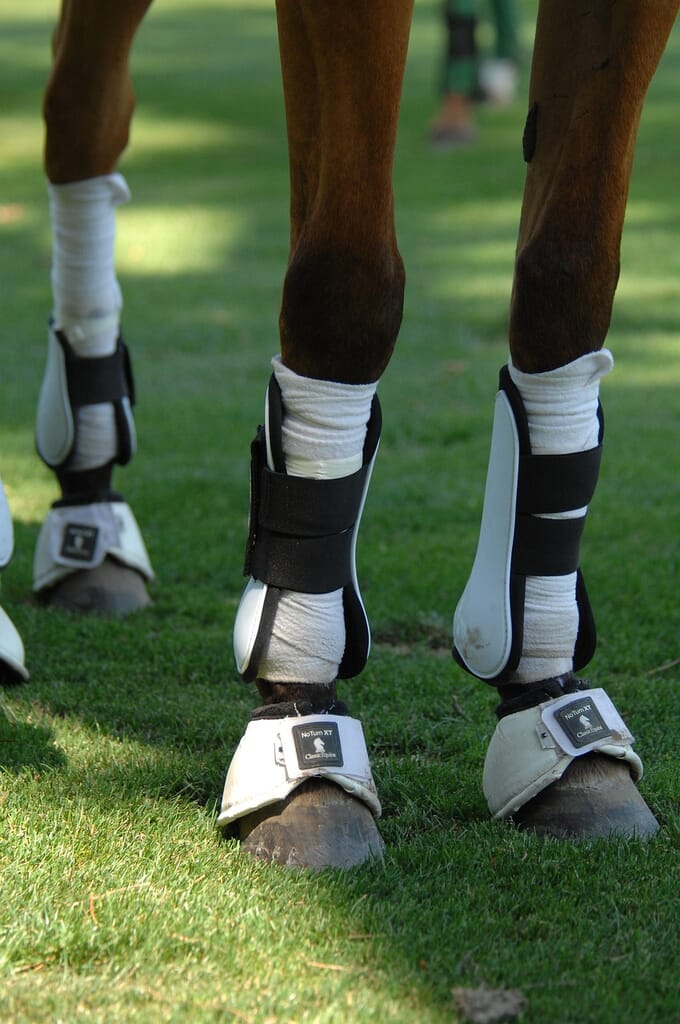
Maitland Walker successful in defending Trademark Infringement claim brought by the Beverly Hills Polo Club
The Claimants, Lifestyle Equities CV and an associated company, owners of the Beverly Hills Polo Club (BHPC) brand brought an action against the Royal County of Berkshire Polo Club (RCBPC), its directors, its former licensing agent, the director of that former licensing agent and six overseas companies (some of which were current or former licensees of RCBPC) operating in Chile, Panama, Peru, Mexico and the UAE (together “the Overseas Territories”) for infringement of the BHPC registered trade mark in the UK, EU and the Overseas Territories.
BHPC’s principle claim was that the RCBPC marks, both depicting a polo rider on a horse (including that at fig. 1 below), were confusingly similar to the BHPC mark (fig. 2 below) which also depicting a polo rider on a horse. BHPC sought an injunction and damages in respect of RCBPC’s use of its marks which it said constituted trade mark infringement under section 10(2) and 10(3) of the Trade Marks Act 1994 (“TMA”).
This case is one of many infringement claims brought by BHPC in the UK and internationally in a campaign to try to monopolise the use of the polo horse and rider logo for a range of consumer products against RCBPC and other owners of polo related brands. BHPC accepted that, of the polo themed clothing brands in the market, the Ralph Lauren Polo brand is number 1, US Polo Association is number 2 and they then asserted that the BHPC brand was number 3. BHPC claimed that these three brands are able peacefully to co-exist in the market but brought the claim against RCBPC because they argued that there exists a likelihood of confusion between the RCPBC brand and the BHPC brand. It follows a string of similar claims against Greenwich Polo Club and Santa Monica Polo Club.
His Honour Mr Justice Mellor (“the Judge”), giving judgment, summarised his task as follows,
“Although this case can be decided with an application of established principles, it does raise in stark form the scope of protection which is or should be afforded to a registered trade mark which is used in a crowded market, i.e. a market in which there are several trade marks using similar motifs and which incorporate the same or similar words.”
Given that the claim involved allegations of infringement in the UK, EU and the Overseas Territories, the parties, facing the complexities of a multi-jurisdictional claim had agreed that all allegations of trade mark infringement be determined by the application of EU/UK law so as to simplify matters and avoid the need for extensive evidence of foreign law.
DECISION
The Claimants claims for infringement, passing off and unlawful means conspiracy were dismissed. The Defendants UK trade mark registrations were to be revoked to the extent that they had admitted non-use.
The judgment provides a summary of the case law on the assessment of the likelihood of confusion and in particular relies on the judgment of the Court of Appeal in Specsavers v Asda (2013) FSR 19.
Throughout, the Claimants argued that the BHPC Mark incorporating the horse and rider motif had developed a highly distinctive character and that, having regard to the fact that the RCBPC Mark was used in the marketing of products substantially similar to those bearing the BHPC Mark then, judged through the eyes of the average consumer, there was a high risk of confusion having regard to the fact that both marks carried the horse and rider motif. The Defendants countered that the horse and rider element of the RCBPC Mark was very different from the BHPC Mark and was in any event simply descriptive of the sport of polo and was used by very many fashion brands globally. In the Defendants’ view, the average consumer could readily distinguish between the two marks because each incorporated readily distinctive polo club names.
The Claimants’ response was that the presence of other polo club brands in the market and how those marks were used were issues of context which were irrelevant to the issue of confusion. The Court should, the Claimants said, consider the marks as a whole and assess the visual, aural and conceptual similarities of the marks.
After a thorough review of the relevant case law, the Judge accepted the Defendants’ view that the horse and rider motif was generic as a reference to the sport in general and not to any specific brand. In his view, the horse and rider motif, on the evidence presented, “adds nothing to the distinctiveness of the logo save to make clear that there is a generic link to polo and to sport.”
In relation to section 10(2) TMA, the Judge decided that:
The BHPC Mark and RCBPC Mark were complex or composite marks in which no particular component dominated. Trading in the UK and EU had not been sufficient to enhance the distinctiveness of the horse and rider in the BHPC Mark.
Visual similarity between the marks, which was the most important on goods to which the marks were generally applied, was low to medium
The marks were international in nature and capable of being understood in many countries, not just those where English was the principal language.
There was no indirect infringement because the elements in the marks and the crowded nature of the market for polo branded goods militated against anyone viewing the RCBPC Mark as a sub-brand or brand refresh of the BHPC brand.
There is no direct infringement, i.e. any likelihood of confusion between the marks, in the UK, EU or Overseas Territories.
In relation to section 10(3) TMA, the Judge held that infringement was not made out because the average consumer would make no link between the marks.
Following a review of the Claimants evidence as to the scale and reach of the BHPC brand, the Judge found that much of the evidence was irrelevant, exaggerated misleading. The sales figures produced by the Claimant suggested that sales took place in a rather sporadic fashion and the evidence suggested that retail sales of BHPC branded goods over the nine year period of the alleged infringement (2010-2018) were small. The Judge found that the claim that the BHPC was a successful global brand with the Claimant selling goods across the UK and the EU was not consistent with the facts.
In conclusion, the Judge found that although the BHPC Mark has a reasonable degree of distinctiveness, that distinctiveness resides in the whole mark. In his view there was no distinctiveness in the horse and rider motif or the words “Polo Club” because they have been used in the relevant markets by Ralph Lauren Polo and in certain territories by other polo brands as well. On that basis there is no significant risk of confusion between the two marks and therefore no risk of the Claimants suffering any injury or damage at all.
In addition, the Judge found that there was little to no evidence of actual confusion between the brands despite the fact that there two brands had been trading in some of the Overseas Territories side by side for significant periods of time saying that, overall, he was struck by how “insubstantial” the supposed evidence of confusion between the brands was.
COMMENT
The judgment will be welcomed in clarifying the law on distinctiveness and curtailing attempts by some brand owners to monopolise motifs generally descriptive of sport. It also unusually dealt with infringement outside of the EU by agreement of the parties.
